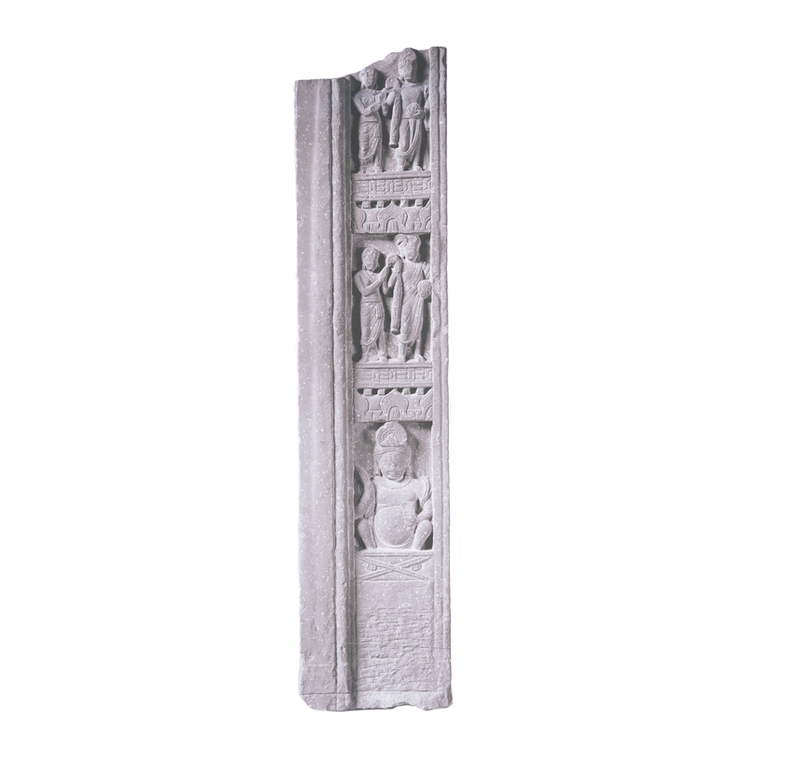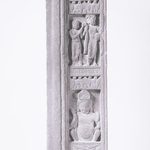| Object Number | 29-69-3 |
| Current Location | Collections Storage |
| Culture | Indian | Kushan | Buddhist | Jain |
| Provenience | India | Mathura |
| Date Made | 2nd century |
| Section | Asian |
| Materials | Mathura Sandstone | Red Sandstone |
| Technique | Carved |
| Iconography | Yaksha |
| Description | This door jamb fragment was most likley originally part of a Jain or Buddhist Shrine at the ancient site of Mathura. As preserved, it displays three scenes, from bottom to top these are: a figure of a seated male fertility deity (yaksha) with moutstache, who holds a club and a cup; a man and a woman finely dressed, the man holding a garland of flowers and the woman with her hands raised in the gesture of adoration (anjali); and still another couple almost identical to the one below. The two couples represent devotees who come to honor and worship the deity of a now lost shrine. The presence of the yaksha at the bottom indicates that the fertility gods of the common people have also been incorporated into the cult. The shrine that this jamb decorated was probably made out of brick and has since disappeared. Thus this jamb, along with other similar fragments of Kushan doorways, provides valuable evidence for the existence of early temples and the worship of images from a period three centuries before the age of great temple building. |
| Height | 113.5 cm |
| Width | 25.8 cm |
| Thickness | 8.8 cm |
| Credit Line | Purchased from H. Kevorkian, 1923 |
| Other Number | 1 - Other Number |
Report problems and issues to digitalmedia@pennmuseum.org.



